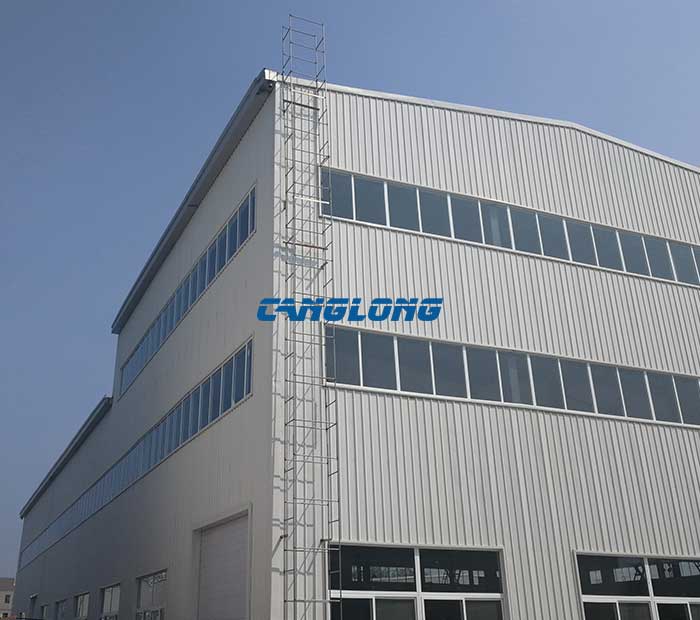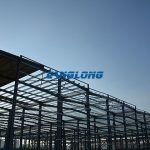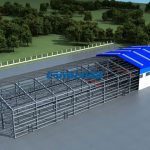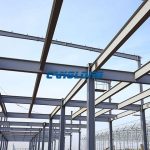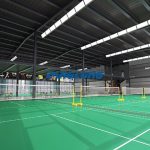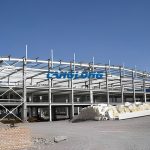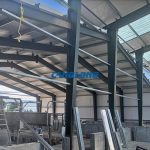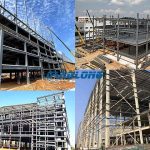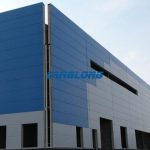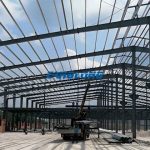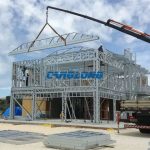Briefly describe the steps and ideas of steel structure design
Judging whether the structure is suitable for steel structure
Steel structures are usually used for high-rise, large-span, complex-shaped, heavy-load or crane-lifting, high-vibration, high-temperature workshops, high-sealing structures, requiring activities or frequent assembly and disassembly. Intuitively speaking: buildings, stadiums, opera houses, bridges, TV towers, warehouses, factories, residences and temporary buildings, etc. This is consistent with the characteristics of the steel structure itself.
Structural selection and structural arrangement
Because the structural selection involves a wide range, the structural selection and arrangement should be carried out under the guidance of experienced engineers.
What should be emphasized in the whole process of steel structure design is “conceptual design”, which is especially important in the stage of structure selection and layout. For some problems that are difficult to make accurate and rational analysis or not specified in the specification, the design ideas obtained from the mechanical relationship between the overall structural system and the sub-systems, failure mechanism, earthquake damage, test phenomena and engineering experience can be obtained from a global perspective. To determine the layout and detailed measures of the control structure. Conceptual design allows for quick and efficient ideation, comparison and selection at an early stage. The obtained structural solutions are often easy to calculate by hand, have clear concepts, and are qualitatively correct, and can avoid unnecessary tedious calculations in the structural analysis stage. At the same time, it is also the main basis for judging whether the output data of computer internal force analysis is reliable or not.
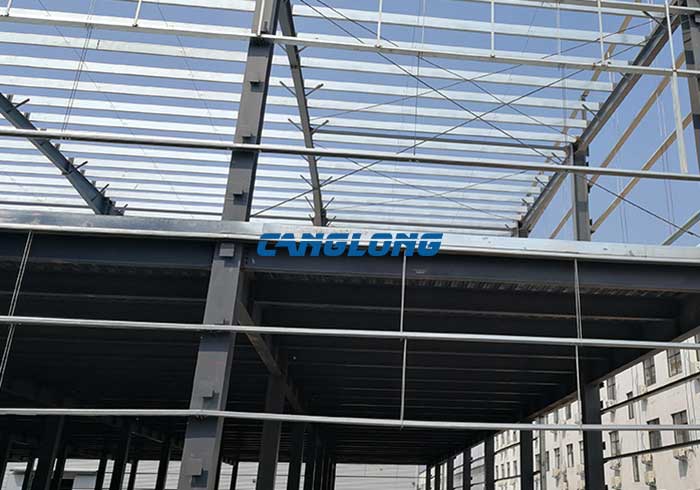
Steel structures usually include frame, plane (wooden row) frame, grid frame (shell), cable-membrane, light steel, tower mast and other structural types.
Most of the steel structure design theory and technology are mature. There are also some problems that have not been solved, or there is no simple and practical design method, such as the stability of the reticulated shell.
When selecting the structure, their different characteristics should be considered. In the light steel industrial workshop, when there is a large suspended load or moving load, it can be considered to abandon the portal rigid frame and use the grid frame. In areas with heavy snowfall, the roof curve should be conducive to snow falling (snow load needs to be considered within 50 degrees of the tangent), and similar considerations should also be made in areas with heavy rainfall. When the building permits, it may be more economical to arrange bracing in the frame than a simple frame with rigid joints. In buildings with large roof covering spans, a suspension cable or cable-membrane structure system where the components are mainly in tension can be selected. In the design of high-rise steel structures, steel-concrete composite structures are often used. In high-rise buildings with high seismic intensity or irregularities, the unfavorable earthquake-resistant core tube plus outer frame should not be selected simply for economical reasons. The surrounding giant src columns should be selected, and the core is a structural system that supports the frame.
The layout of the structure should be comprehensively considered according to the system characteristics, load distribution and properties. Generally speaking, the stiffness should be uniform and the mechanical model should be clear. Limit the influence range of large loads or moving loads as much as possible so that they can be transmitted to the foundation by the most direct line. The distribution of anti-lateral supports between columns should be uniform. Its centroid should be as close as possible to the line of action of the lateral force (wind shock). Otherwise, the torsion of the structure should be considered. The anti-side of the structure should have multiple lines of defense. For example, if there is a supporting frame structure, the column should be able to bear at least 1/4 of the total horizontal force alone.
The layout of the secondary beams on the floor plan of the frame structure can sometimes adjust the load transfer direction to meet different requirements. Usually, the secondary beams are arranged in the short direction in order to reduce the section, but this will increase the section of the main beam, reduce the floor height, and sometimes the top side columns will not be able to bear it. At this time, supporting the secondary beam on the shorter main beam can Sacrifice the secondary beam to keep the main beam and column.
